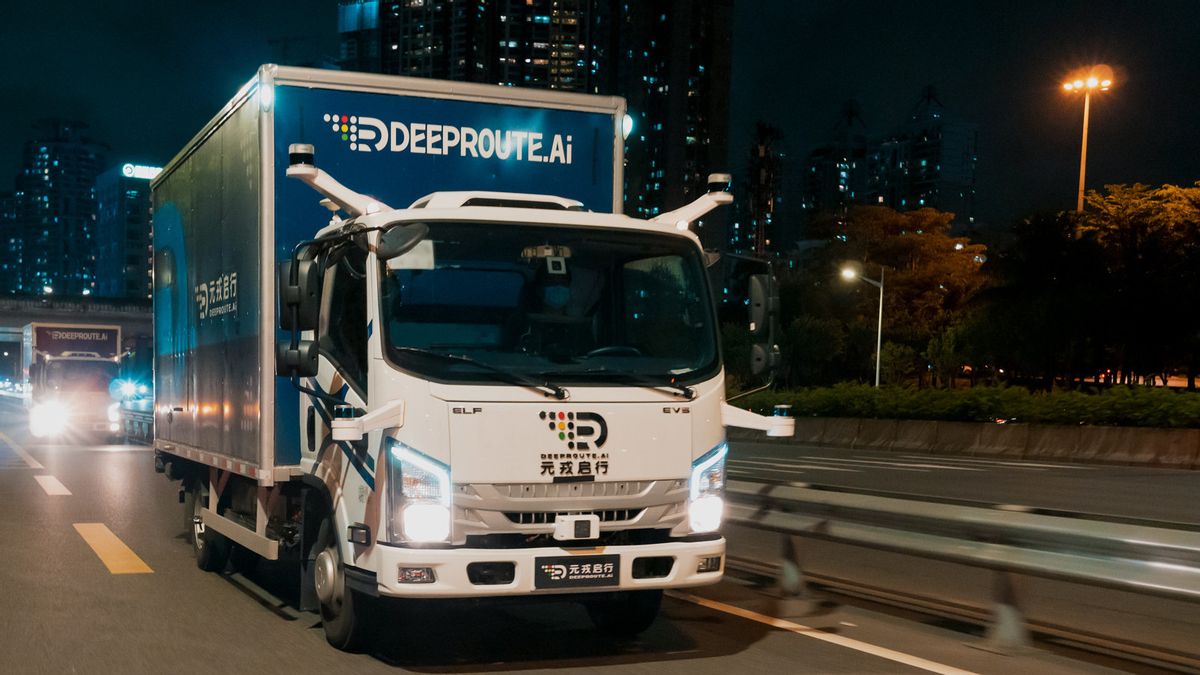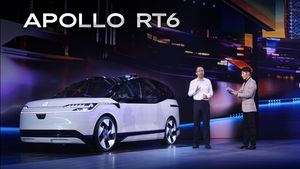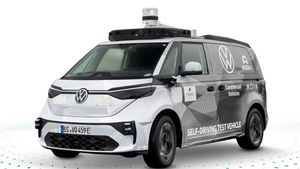JAKARTA - DeepRoute.ai's sensor-laden robotaxis can be found in the bustling business district of Futian, Shenzhen, China. There are now 50,000 robotaxi test rides in the city since last year.
This far exceeds the number of robotaxis in the United States, a country considered an early leader in testing autonomous vehicle (AV) technology. Now in Shenzhen, the industry seems to be changing gears, with robotaxis experiments becoming a common sight.
Baidu Inc's Apollo units, Toyota Motor Corp-backed Pony, Nissan-backed Weride, Alibaba-backed Auto X, and Deeproute have all run trials navigating difficult city environments, with frequent pedestrians and e-scooters everywhere.
Shenzhen, a city of 18 million, has now implemented China's clearest AV regulations. Starting Monday, registered AVs will be allowed to operate without a driver in the driver's seat across large swathes of the city, but drivers must remain in the vehicle.
So far, Chinese cities have allowed robotaxis to operate on a more limited basis with permission from local authorities. But the Shenzhen regulations for the first time provide an important framework for liability in the event of an accident.
If the AV has the driver behind the wheel, the driver will be liable for the accident. If the car is completely driverless, the vehicle owner will be held responsible. If a defect causes an accident, the car owner can ask for compensation from the manufacturer.
"If you want more cars, eventually there will be accidents, so this regulation is very important for mass deployment", said Maxwell Zhou, CEO of DeepRoute. "It's not without an actual driver, but it's a huge milestone."
So far the United States has excelled in AV testing, with California now greenlighting robotaxis testing on public roads since 2014. This allowed Waymo LLC, Cruise, and Alphabet Inc's Tesla to cover millions of miles in road testing.
But China has stepped on the accelerator, as Beijing has made AV a key area of its last five-year plan. Shenzhen wants its smart vehicle industry to reach 200 billion yuan in revenue by 2025.
In May last year, Cruise's Chief Executive, Dan Amann, warned President Joe Biden that US safety regulations risked the country's AV industry falling behind China, with a "top-down, centrally-directed approach".
Deeproute aims to have 1,000 robotaxis with safety drivers on Shenzhen's roads in the next few years when more detailed regulations are expected.
But in a city with a fleet of 22,000 state-owned electric taxis from Shenzhen-based BYD, where a 20 km (12-mile) trip costs around 60 yuan, production costs for AV will need to be lowered before robotaxis is commercially viable, Zhou said.
Deeproute and other robotaxi companies rely on mass production to lower costs and collect data. Deeproute is selling its driving solution to car markers for around $3,000.
Zhou views Shenzhen's DJI Technology Co as a role model, with the company leveraging lower hardware costs and an integrated supply chain to make it a dominant player in the commercial drone space worldwide.
SEE ALSO:
On July 21 Baidu announced a new AV with a removable steering wheel that will be used for robotaxis next year, priced at 250,000 yuan per unit, almost half the price of the previous generation.
"We are moving towards a future where taking a robotaxi will be half the cost of a taxi ride today", Baidu chief executive Robin Li said at the Baidu World conference.
Shenzhen's supply chain and lower costs give it a big manufacturing advantage over Silicon Valley, but AV solutions maker David Chang doesn't want to be confined to one market.
"In Shenzhen, the cost of capital is a third of California, because we have battery suppliers, we have sensors, we have most of the integration", Shenzhen-based CEO and founder of Whale Dynamic told Reuters.
"But his income is one-twelfth that of California, so maybe it's not a fancy business to do", he said.
Deeproute, Weride, and Pony.ai also have offices in Silicon Valley, with R&D and testing teams in both locations. "We didn't want to shrink down into the well and fight with other frogs. We wanted to jump out of the well", said Chang.
The English, Chinese, Japanese, Arabic, and French versions are automatically generated by the AI. So there may still be inaccuracies in translating, please always see Indonesian as our main language. (system supported by DigitalSiber.id)
















